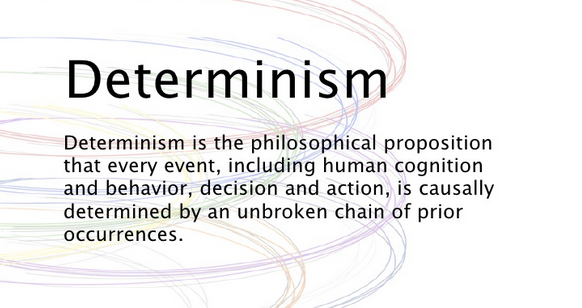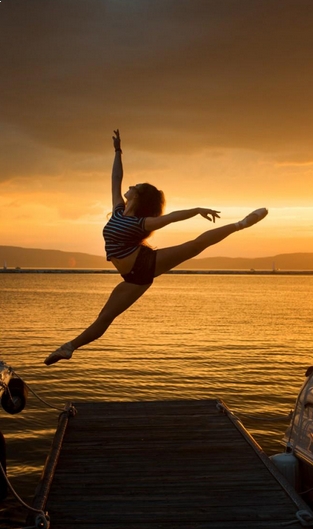BREAKING NEWS
LATEST POSTS
-
Microsoft Working on ‘Far Larger’ In-House AI Model
-
Apple launches Final Cut Camera app to support multicam productions
https://www.theverge.com/2024/5/7/24151109/apple-final-cut-camera-app-support-multicam-ipad
Apple has released Final Cut Camera for iPhone and iPad, allowing filmmakers to take video and stream it live back to an iPad for a multicam shoot. The updated Final Cut 2 app allows users to can control each Final Cut Camera-running device connected to it with a multiscreen view. Users can switch between production and editing anytime to live-cut their projects in the new version.
-
The 3 Body Problem and the case against Determinism
It’s becoming clear that deterministic physics cannot easily answer all aspects of nature, at astronomical and biological level.
Is this a limitation in modern mathematics and/or tools. Or an actual barrier?
The 𝐓𝐡𝐫𝐞𝐞-𝐁𝐨𝐝𝐲 𝐏𝐫𝐨𝐛𝐥𝐞𝐦 is one of the most enduring challenges in celestial mechanics, addressing the complex motion of three celestial bodies interacting under gravity. Governed by Newton’s laws of motion and the law of universal gravitation, it seeks to predict the paths of the bodies based on their masses, positions, and velocities. While the Two-Body Problem has exact solutions described by Kepler’s laws, introducing a third body leads to a nonlinear system of equations with no general analytical solution. This complexity arises from the chaotic interactions between the bodies, where even minute changes in initial conditions can lead to vastly different trajectories—a key aspect of chaos theory.
Historically, the Three-Body Problem has fascinated some of the greatest scientific minds. Isaac Newton laid its foundation, but it was Joseph-Louis Lagrange and Leonhard Euler who discovered specific cases with periodic or predictable solutions. Lagrange identified the Lagrange points, stable positions where the gravitational forces and motion of the three bodies balance, while Euler found collinear solutions, where the bodies align on a single line periodically. These solutions, though special cases, have profound implications for space exploration, such as identifying stable regions for satellites orbits.
Despite the chaotic nature of the Three-Body Problem, researchers have discovered periodic solutions where the bodies follow repetitive paths, returning to their original positions after a fixed time. In the 1970s, Michel Hénon, Roger A. Broucke, and George Hadjidemetriou identified a fascinating family of such solutions, now known as the Broucke–Hénon–Hadjidemetriou family. These solutions often involve symmetric and elegant trajectories, such as the figure-eight orbit, where three equal-mass bodies chase each other along a shared path resembling the number eight.
Other periodic solutions include equilateral triangle configurations (where the bodies maintain a triangular shape while rotating or oscillating) and collinear periodic orbits (where the bodies periodically align and reverse directions). These solutions highlight the intricate balance between gravitational forces and motion, offering glimpses of stability within the chaos.
While the Three-Body Problem laid the groundwork for understanding gravitational interactions, the study of higher n-body problems reveals the rich and chaotic dynamics of larger systems, offering critical insights into both cosmic structures and practical applications like orbital dynamics. -
James Gerde – The way the leaves dance in the rain
https://www.instagram.com/gerdegotit/reel/C6s-2r2RgSu/
Since spending a lot of time recently with SDXL I’ve since made my way back to SD 1.5
While the models overall have less fidelity. There is just no comparing to the current motion models we have available for animatediff with 1.5 models.
To date this is one of my favorite pieces. Not because I think it’s even the best it can be. But because the workflow adjustments unlocked some very important ideas I can’t wait to try out.
Performance by @silkenkelly and @itxtheballerina on IG
-
How the VFX industry is recovering from last year’s strikes
Jonathan Bronfman, CEO at MARZ, tells us: “I don’t think the industry will ever be the same. It will recover slowly in 2024. The streaming wars cost studios too much money and now they are all reevaluating their strategies.”
He notes that AI will play a big role in how things shake out. “Technology is pushing out the traditional approach, something which is long overdue. Studios in Hollywood have been operating the same way for decades, and now AI will move them off their pedestal.
“The entire industry is in for a reckoning. I think studios would have come to this realisation eventually, so it was inevitable, but I think the pressure from the strikes accelerated this.”
https://www.vfxwire.com/how-the-vfx-industry-is-recovering-from-last-years-strikes/
FEATURED POSTS
-
Rec-2020 – TVs new color gamut standard used by Dolby Vision?
https://www.hdrsoft.com/resources/dri.html#bit-depth

The dynamic range is a ratio between the maximum and minimum values of a physical measurement. Its definition depends on what the dynamic range refers to.
For a scene: Dynamic range is the ratio between the brightest and darkest parts of the scene.
For a camera: Dynamic range is the ratio of saturation to noise. More specifically, the ratio of the intensity that just saturates the camera to the intensity that just lifts the camera response one standard deviation above camera noise.
For a display: Dynamic range is the ratio between the maximum and minimum intensities emitted from the screen.
The Dynamic Range of real-world scenes can be quite high — ratios of 100,000:1 are common in the natural world. An HDR (High Dynamic Range) image stores pixel values that span the whole tonal range of real-world scenes. Therefore, an HDR image is encoded in a format that allows the largest range of values, e.g. floating-point values stored with 32 bits per color channel. Another characteristics of an HDR image is that it stores linear values. This means that the value of a pixel from an HDR image is proportional to the amount of light measured by the camera.
For TVs HDR is great, but it’s not the only new TV feature worth discussing.
(more…)
-
Ethan Roffler interviews CG Supervisor Daniele Tosti
Ethan Roffler
I recently had the honor of interviewing this VFX genius and gained great insight into what it takes to work in the entertainment industry. Keep in mind, these questions are coming from an artist’s perspective but can be applied to any creative individual looking for some wisdom from a professional. So grab a drink, sit back, and enjoy this fun and insightful conversation.
Ethan
To start, I just wanted to say thank you so much for taking the time for this interview!Daniele
My pleasure.
When I started my career I struggled to find help. Even people in the industry at the time were not that helpful. Because of that, I decided very early on that I was going to do exactly the opposite. I spend most of my weekends talking or helping students. ;)Ethan
(more…)
That’s awesome! I have also come across the same struggle! Just a heads up, this will probably be the most informal interview you’ll ever have haha! Okay, so let’s start with a small introduction!
-
9 Best Hacks to Make a Cinematic Video with Any Camera
https://www.flexclip.com/learn/cinematic-video.html
- Frame Your Shots to Create Depth
- Create Shallow Depth of Field
- Avoid Shaky Footage and Use Flexible Camera Movements
- Properly Use Slow Motion
- Use Cinematic Lighting Techniques
- Apply Color Grading
- Use Cinematic Music and SFX
- Add Cinematic Fonts and Text Effects
- Create the Cinematic Bar at the Top and the Bottom








